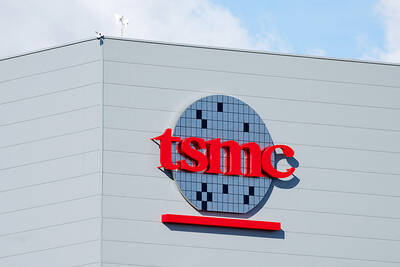T-Mobile USA, the fourth-largest mobile provider in the US, will offer HTC Corp’s (宏達電) newest flagship phone for as little as US$99.99, T-Mobile said in a press release on Monday, in its latest effort to stem customer losses.
T-Mobile, a unit of Germany’s Deutsche Telekom AG, is trying to shift customers from its traditional two-year contract model to new rate plans without phone subsidies.
T-Mobile customers currently have to pay US$99.99 upfront for certain 4G long-term evolution (LTE) devices and US$20 in monthly installments over the following two years, adding up to US$580, the press release said.
These mobile devices, compatible with T-Mobile’s LTE network include the HTC One, the Samsung Galaxy S4 and Note II, the BlackBerry Z10 and Apple’s iPhone 5. The company did not say when the HTC One will be available.
T-Mobile’s move is expected to reduce costs for its customers, since the carrier’s rivals, such as Verizon Wireless, AT&T and Sprint Nextel, usually charge US$200 upfront for an LTE handset such as the iPhone 5, with a two-year contract.
T-Mobile lost 515,000 contract subscribers in the fourth quarter of last year due to a slow start of its 4G LTE strategy, while the company’s prepaid customers continued to grow for the sixth consecutive quarter.
Separately, senior executives from Taiwan’s telecoms operators said that shipments of the HTC One arrived on Tuesday, and that local consumers would be able to get their hands on the new phone by tomorrow.

Taiwan Semiconductor Manufacturing Co (TSMC, 台積電) secured a record 70.2 percent share of the global foundry business in the second quarter, up from 67.6 percent the previous quarter, and continued widening its lead over second-placed Samsung Electronics Co, TrendForce Corp (集邦科技) said on Monday. TSMC posted US$30.24 billion in sales in the April-to-June period, up 18.5 percent from the previous quarter, driven by major smartphone customers entering their ramp-up cycle and robust demand for artificial intelligence chips, laptops and PCs, which boosted wafer shipments and average selling prices, TrendForce said in a report. Samsung’s sales also grew in the second quarter, up

LIMITED IMPACT: Investor confidence was likely sustained by its relatively small exposure to the Chinese market, as only less advanced chips are made in Nanjing Taiwan Semiconductor Manufacturing Co (TSMC, 台積電) saw its stock price close steady yesterday in a sign that the loss of the validated end user (VEU) status for its Nanjing, China, fab should have a mild impact on the world’s biggest contract chipmaker financially and technologically. Media reports about the waiver loss sent TSMC down 1.29 percent during the early trading session yesterday, but the stock soon regained strength and ended at NT$1,160, unchanged from Tuesday. Investors’ confidence in TSMC was likely built on its relatively small exposure to the Chinese market, as Chinese customers contributed about 9 percent to TSMC’s revenue last

With this year’s Semicon Taiwan trade show set to kick off on Wednesday, market attention has turned to the mass production of advanced packaging technologies and capacity expansion in Taiwan and the US. With traditional scaling reaching physical limits, heterogeneous integration and packaging technologies have emerged as key solutions. Surging demand for artificial intelligence (AI), high-performance computing (HPC) and high-bandwidth memory (HBM) chips has put technologies such as chip-on-wafer-on-substrate (CoWoS), integrated fan-out (InFO), system on integrated chips (SoIC), 3D IC and fan-out panel-level packaging (FOPLP) at the center of semiconductor innovation, making them a major focus at this year’s trade show, according

DEBUT: The trade show is to feature 17 national pavilions, a new high for the event, including from Canada, Costa Rica, Lithuania, Sweden and Vietnam for the first time The Semicon Taiwan trade show, which opens on Wednesday, is expected to see a new high in the number of exhibitors and visitors from around the world, said its organizer, SEMI, which has described the annual event as the “Olympics of the semiconductor industry.” SEMI, which represents companies in the electronics manufacturing and design supply chain, and touts the annual exhibition as the most influential semiconductor trade show in the world, said more than 1,200 enterprises from 56 countries are to showcase their innovations across more than 4,100 booths, and that the event could attract 100,000 visitors. This year’s event features 17